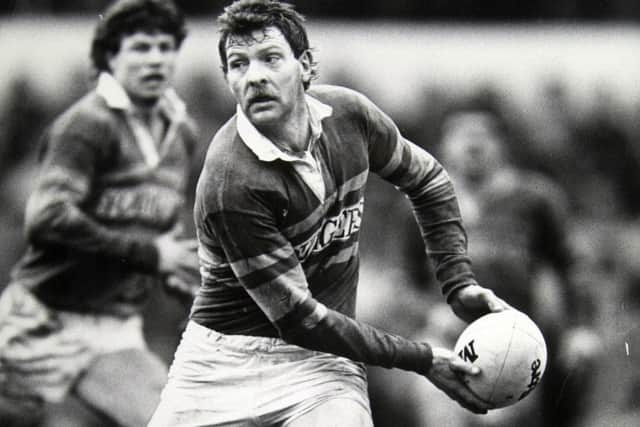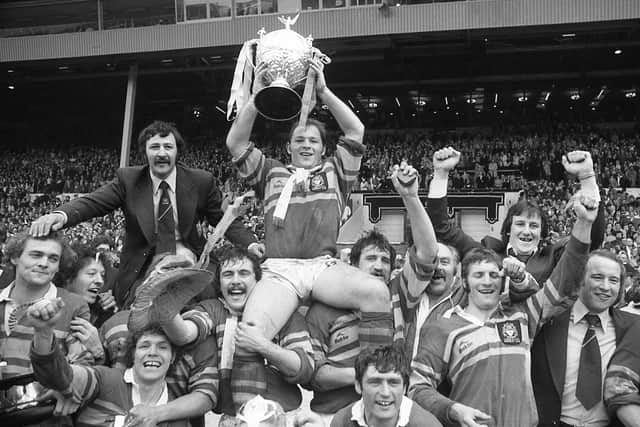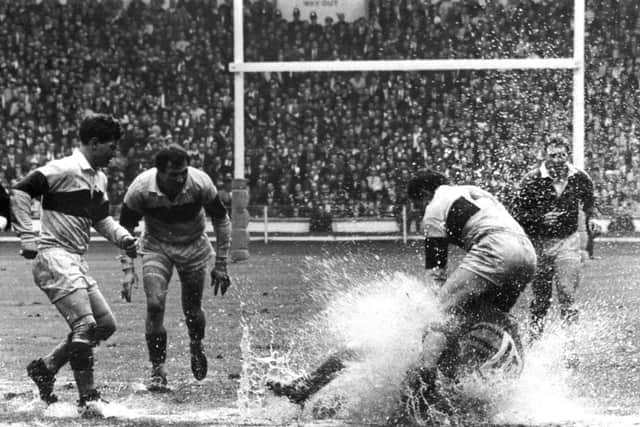Nostalgia stories highlight huge differences to the modern game – Peter Smith
and live on Freeview channel 276
Before 2005, this time of year was Wembley season. During the winter era and for nine seasons after Super League began, the Challenge Cup final was a spring event, played in late April or early May.
Therefore, over the past week or so various anniversaries have been celebrated – including the 55 years since Hunslet’s famous Wembley showdown with Wigan, the 52nd anniversary of the Watersplash final and 42 years on from Leeds’ epic comeback against St Helens.
Advertisement
Hide AdAdvertisement
Hide AdWith no live sport available, clubs, broadcasters – and newspapers – have gone big on nostalgia. The BBC have shown two packages of Cup final highlights on days when they were due to be televising the fifth and sixth rounds of this year’s competition and games available in full on Leeds Rhinos’ YouTube channel include the 1968 and 1977 showpieces.


It’s striking how much rugby league has changed since those days. In fact, the modern version of the code is effectively a different sport.
Watching Leeds’ victory over Widnes from 43 years ago, a few things are immediately apparent – and not just the fact that, if he was playing now, Big Jim Mills would have spent far more time suspended than actually on the field.
Players look different to today; there was more of a variety of builds – there aren’t many Steve Pitchfords around nowadays – and the part-time players of four decades ago were less muscular, as well as having fewer tattoos.
Advertisement
Hide AdAdvertisement
Hide AdThey were just as quick though and, with only five metres between the teams, there was more emphasis on skill to break down the opposition’s defence.


John Holmes, for example, would have been a sensation in the modern game, under the 10-metre rule and with more protection from referees.
Scrums, rather than a handover, after the final tackle added some variety to the game, instead of five drives and a kick, as did contested scrums.
Now, a scrum is simply a way of restarting play and creating a bit of space. Up until the early 1980s, they were a genuine competition for the ball but, if anything judging by the 1977 final, were an even scruffier spectacle than today.
Advertisement
Hide AdAdvertisement
Hide AdErrors, particularly knock-ons at a play-the-ball, weren’t as rigorously policed and it was a 13-man game, with substitutions used more for injury cover than tactically or to give players a rest. However, the occasion has changed even more than the game itself. The 1978 crowd of 95,872 would be unimaginable now, not only because there is no longer a venue big enough to fit that many people in.


The Challenge Cup final was once the north’s big day out, but now seems to appeal only to fans of the two teams involved.
The summer era has seen only four attendances of more than 80,000, while the gate didn’t drop below that at all between 1975 and 1988.
Wembley becoming all-seater, the move around the country while it was being rebuilt and the new national stadium’s reduced capacity have all played a part, but it is clear the competition is in decline.
Advertisement
Hide AdAdvertisement
Hide AdThis year’s final was due to be played in July, a month earlier than has become usual. That was a step in the right direction though, ironically, coronavirus means it will have to be pushed back to the autumn – and possibly played away from Wembley – if it happens at all.
The Challenge Cup final has never felt truly at home in August and restoring it to a spring date, with rounds played in pre- and early-season, could go a long way to reviving the competition’s flagging fortunes.
What will happen in 2020 remains to be seen, but there is a growing feeling among lower-division clubs that the Betfred Championship and League One will not restart.
There are five non-Super League clubs left in the tournament, so they would be in a tricky situation if their league fixtures were abandoned.
Advertisement
Hide AdAdvertisement
Hide AdThat is just one of many difficult problems the Rugby Football League will have to deal with as the sport, or some of it, prepares to resume.
Absence makes the heart grow fonder and it may well be a year’s break actually restores some of the Challenge Cup’s lost magic.
Comment Guidelines
National World encourages reader discussion on our stories. User feedback, insights and back-and-forth exchanges add a rich layer of context to reporting. Please review our Community Guidelines before commenting.